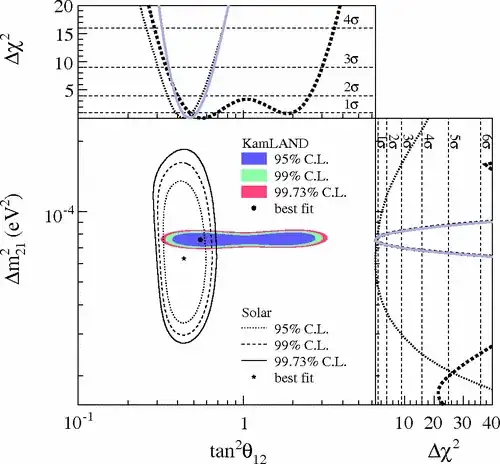The Dirac $CP$ phase $\delta_{CP}$ in the $U_{PMNS}$ mixing matrix lead to the $CP$-violation in the Lepton sector. I think this can be tested by comparing neutrino flavour oscillation probabilities with anti-neutrino flavour oscillation probabilities. If only neutrinos are produced in Sun but not antineutrinos, how can one measure and compare two probabilities?
-
Ideally you use an accelerator source of neutrinos (e.g. what HyperK and DUNE plan to use) and reverse the polarity of the 'horn' to choose neutrinos or antineutrinos. – dukwon Apr 13 '17 at 18:35
1 Answers
Anti-neutrinos are produce in copious quantities by nuclear reactors, in the atmospheric interactions of cosmic rays and can be produced on-demand at accelerators. Indeed, given the nature of the interaction of normal and anti-neutrinos it is arguable that anti-neutrinos are easier to deal with experimentally at low energies.
It is worth noting that the first unambiguous observation of neutrino interactions was of reactor anti-neutrinos.
But so far the available data simply isn't precise enough to detect a difference between matter-type and antimatter-type neutrino oscillation parameters.. This is something that the community has been building up to for some time. I think the smart money right now is on NO$\nu$A, and if they have some unexpected problem DUNE will be along to lend a hand.
One of the interesting issues is that some of the data has good resolution in $\Delta m$ and poor resolution in $\theta$ and other data sets turn that around. If you combine them under the assumption of CP symmetry then you get a good overall result, but of course that won't tell you that if CP is violated. Here's a figure from a KamLAND paper showing how this works:
(Figure from https://journals.aps.org/prl/abstract/10.1103/PhysRevLett.100.221803 )
-
But how would you know the solar mixing angle $\theta^{\bar{\nu}}_{12}$ for anti-neutrino flavor oscillation? – SRS Apr 13 '17 at 18:40
-
1You measure the long-component of the reactor oscillation with a detector like, say, KamLAND (which I was a part of for a while) and of the atmospheric behavior with detectors like SNO and Super-K. Neutrinos are an industry in particle physics with nearly 20 years of serious work under our belts and a similar amount planned. – dmckee --- ex-moderator kitten Apr 13 '17 at 18:46
